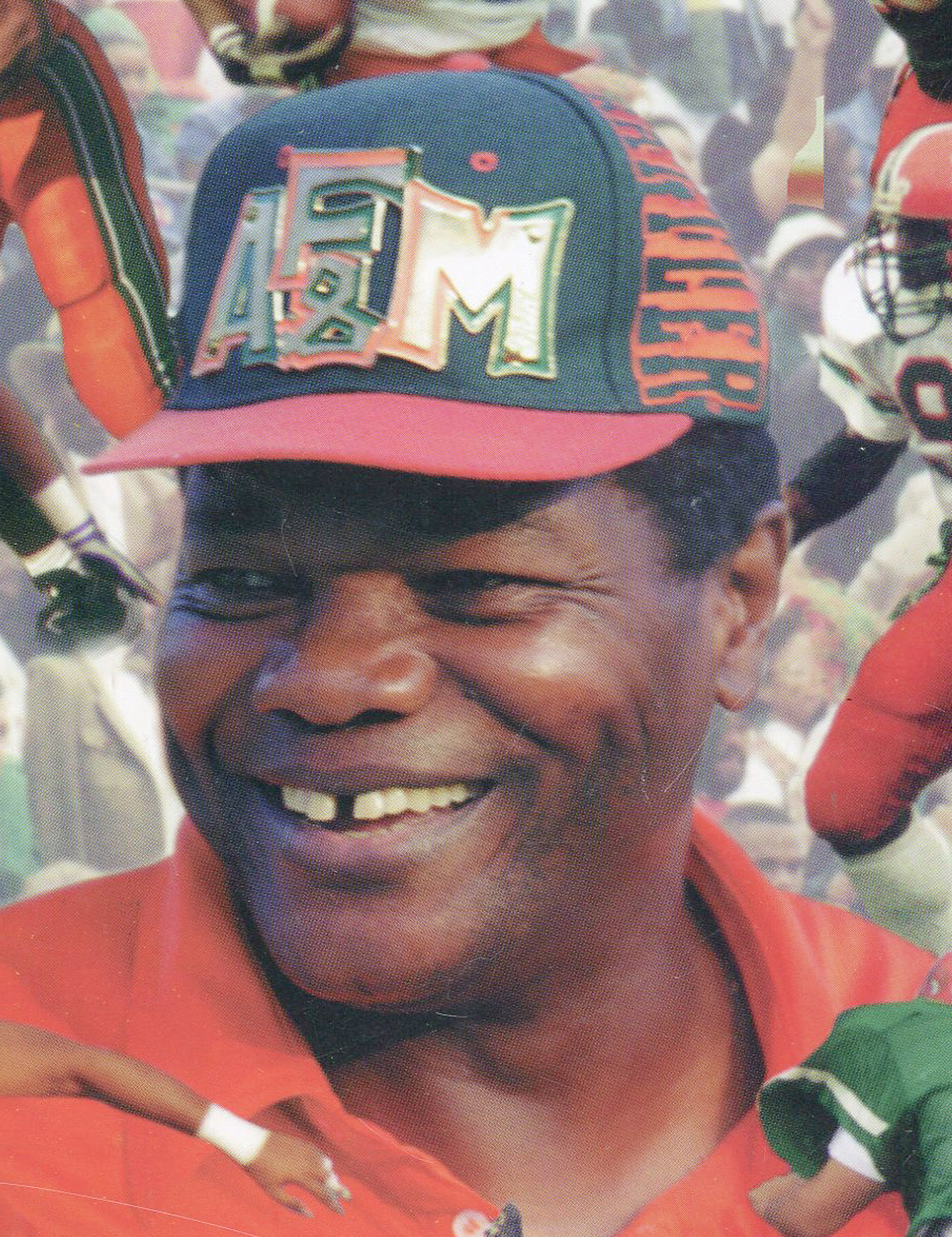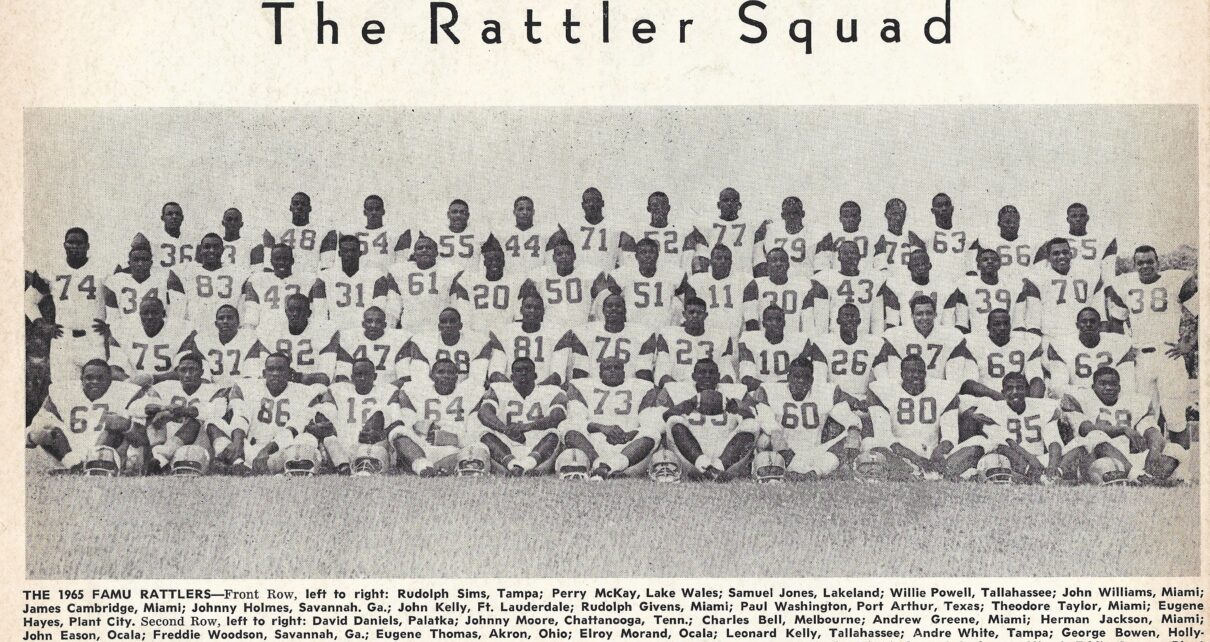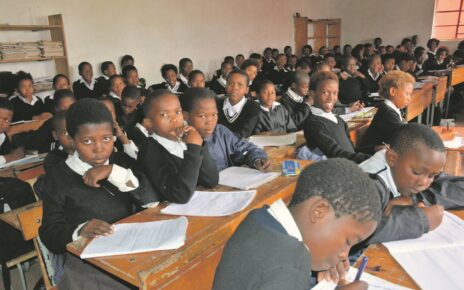You don’t really know what the high point was until after the fact. You don’t really know where the peak was until you’ve begun to come down.
With 16 years of hindsight, we can pinpoint Florida A&M’s modern peak. On December 11, 1999, the Rattlers led Jim Tressel’s Youngstown State by 11 points with eight minutes to go in the Division I-AA (now FCS) semifinals. They had the ball at the Penguins’ 4. In that moment, the future was green and orange.
/cdn.vox-cdn.com/uploads/chorus_image/image/49480355/Billy_Joe_Jim_Tressel.0.0.jpg)
Under Jake Gaither from the end of World War II until 1969, the Rattlers were one of the two anchors of Black college football alongside Eddie Robinson’s Grambling. Nine years after Gaither’s retirement, under former Woody Hayes assistant Rudy Hubbard, they won the inaugural Division I-AA national title in 1978. They were storied and celebrated.
As with most of the HBCU universe, FAMU saw its talent level slide in the post-segregation era. After going 23-1 in 1977-78, they wouldn’t win more than seven games in a season for nearly two decades.
Then Billy Joe showed up.
Some key dates in FAMU history

1945: FAMU hires Gaither. The Rattlers win 22 SIAC titles in 25 years with Gaither and won six Black College National Championships. They lose zero or one games 15 times. He retires after an 8-1 1969. His final win was over Eddie Robinson and Grambling in the 1969 Orange Blossom Classic, an annual battle between FAMU and another top HBCU team. Gaither wins 12 of those.1974: FAMU hires Hubbard. The Rattlers had gone 21-22 after Gaither retired, but Hubbard, a 28-year-old former Ohio State running back, gets them rolling again.1978: FAMU wins the inaugural NCAA I-AA title in 1978, beating UMass in the finals, 35-28.1979: FAMU beats Howard Schnellenberger’s first Miami team, 16-13, in the Orange Bowl.1996: In Billy Joe’s third year, FAMU returns to the I-AA playoffs after a nearly two-decade absence. They will go to six straight, reaching the second round in 1998 and the semifinals in 1999.2004: An ill-timed jump to FBS goes wrong. FAMU goes 3-8, 0-6 against FBS competition, and goes back to the MEAC after one year.2010: The last time FAMU beat rival Bethune-Cookman. The Rattlers go on to a five-game losing streak to the Wildcats, whom they have historically dominated (45-19 since World War II).
2011: A hazing scandal engulfs the famed FAMU Marching 100 after drum major Robert Champion dies. The band is suspended until 2013.
2015: FAMU hires former James Madison head coach Alex Wood as its 18th head coach.
The 6’2, 235-pounder had graduated from Villanova and was selected in two different football drafts in 1963. From the NFL, Washington selected him in the ninth round. From the AFL, Denver picked him in the 11th. Joe went to Denver, where he became the AFL’s Rookie of the Year. Two years later, after a trade to Buffalo, he made the AFL all-star team and started for the league champions.
In 1970, he served as an assistant coach at Cheyney, an HBCU 15 miles west of Villanova. And after a year on Roy Lester’s failing Maryland staff, he landed back at Cheyney, replacing Fred Reed as head coach.
Reed had won one game in three years. Joe won 31 in seven.
In 1979, Joe changed jobs but remained in Philadelphia. He spent two years as the Eagles’ running backs coach under Dick Vermeil. There, he learned a lot of the passing concepts he would one day bring back to the college ranks. Wilbert Montgomery rushed for 1,512 yards under his tutelage in 1979, and in 1980, the Eagles went to their first Super Bowl.
Cheyney averaged 17.9 points per game under Joe in 1974. It was the offensive high point for him there. But when Central State University hired him as its head coach in 1981, he had figured some things out. With two years of NFL coaching experience, he moved to Wilberforce, Ohio, and unleashed hell on unsuspecting NAIA defenses.
An HBCU in Southwestern Ohio, Central State was weighing whether to continue fielding a team. Barely a decade after hiring Joe, the program had two national titles.
Central State scored and scored and scored: 508 points in 1983, 667 in 1989.
“It was just a situation where he liked to score points,” longtime Florida A&M sports information director Alvin Hollins says. “At Central State, he may have been using some of those NFL concepts there, but they scored 101 points on a school [poor Lane College in 1989], and the coach from the other team literally ran across the field waving a white towel.”
The game was called with 11 minutes left.
Despite its NAIA stature, Central State won or shared five consecutive Black college national championships during Joe’s tenure.
In 1994, Florida A&M brought Joe to Tallahassee. The Rattlers averaged 21 points per game in his first year, 36 in his third, and 46 in his fifth.
In Northern Florida, Joe found all the pieces he needed for his version of what would be known as the spread: the Gulf Coast offense.
“He learned a lot from Sid Gilman, who was with the San Diego Chargers in the AFL days,” Hollins says. “He was an assistant for Vermeil for two years. He picked up a lot of those four-receiver concepts. That West Coast thing, that’s just a spread offense.”
Bill Walsh’s West Coast offense was premised around spreading defenders from sideline to sideline with the goal of beating a stressed defense vertically. That is a one-sentence description of the spread. The personnel and tactics differ, but the goal is the same.
At FAMU, Joe found personnel he could work with.
“The offense was kind of a natural,” says Hollins. “We had speed here in Florida. And when it was rolling — in 1998, 1999 — we scored 40-50 points on a regular basis.”
In 1996, FAMU lost by four points in the first round of the I-AA playoffs to nearby rival and eventual Sun Belt member Troy State. In 1997, the Rattlers fell by a respectable 15 to Georgia Southern in the same round. In 1998, they beat Troy, then fell by three points to Western Illinois.
“He said this was part of his mission statement every year: the national championship,” says Hollins. “That was what you played for: national championship, MEAC championship, good season, in descending order. And he had success in the past to back it up. He wasn’t afraid of playing the other schools. That lack of fear, just saying, ‘Let’s line up and play,’ and the tremendous respect people had for him in the coaching profession, it was clear that he was a great coach, a great person, a great leader.”
FAMU went 8-3 in the 1999 regular season, starting 1-2 with losses to Miami and Tennessee State. The Rattlers put up 76 points on S.C. State, 66 on Morgan State, 48 on Delaware State, 63 on Bethune-Cookman and 65 on a Southern team ranked first in the Black college rankings. Joe’s FAMU hit the FCS playoffs red hot.
In the first round of the 1999 playoffs, FAMU beat Appalachian State, 44-29, in Boone. A week later, the Rattlers beat Troy State, 17-10, in Troy. And despite quarterback JaJuan Seider getting hurt, an 11-yard pass from backup Quinn Gray to Cedric Mitchell gave FAMU a 24-13 lead over Tressel and his Penguins early in the fourth quarter. With just under nine minutes left, the Rattlers had the ball at YSU’s 4.
 FAMU’s date with Georgia Southern in the I-AA finals was all but set.
FAMU’s date with Georgia Southern in the I-AA finals was all but set.
Dagger in hand, Gray threw a pick at the goal line. YSU’s Jeff Ryan completed a 46-yard strike to Elliott Giles for a touchdown. After a failed two-point conversion, it was 24-19.
With 4:30 left, FAMU punted on fourth-and-1 from its own 39. Odds almost always favor going for it in such situations, but the Rattler defense had been excellent. Joe trusted it.
FAMU committed two personal foul penalties, and after 11 plays and 72 yards, another touchdown pass gave YSU the lead. FAMU got to the Youngstown 40 in the final seconds, but a desperation pass fell short.
In 2000’s first round, Western Kentucky sat on the ball, took a small lead into halftime, then pounced on an increasingly desperate FAMU on the way to a 27-0 win. In 2001, the Rattlers raced ahead of Georgia Southern 21-7 in the first quarter and led 28-27 at halftime but got buried late, 60-35.
The run broke after 2001. The Rattlers went 7-5 in 2002 and missed the playoffs.
But Joe had a plan. So did FAMU: Make this program a Division I-A stalwart.
If Troy could do it, why couldn’t FAMU, right? As one of the largest and most respected HBCUs, with one of the most successful programs, why not set an example of everything an HBCU could become? Why not make the leap to the eventual FBS?
“When we would go to the playoffs, we’d have just drawn 70,000 at the Florida Classic [the annual rivalry between FAMU and Bethune-Cookman],” Hollins says, “and the guys from Appalachian State and everywhere else would be shocked.
“That’s a beauty of the HBCU experience. The social aspect of our sports have always been a huge thing, especially in football. And as we came further into the 1980s and 1990s and 2000s, with the Bayou Classic [Southern-Grambling], the Magic City Classic [Alabama State-Alabama A&M] and others, those games haven’t really lost their luster.”
Big attendance and a run of success can make you dream big.
“[Coach Joe] was enthused about the idea,” says Hollins. “He knew the benefit of being able to move up if we could structure everything right. There were too many missing pieces for us to make a successful run right away. It was really going to take a lot to push up to that level. You have additional scholarships, a bigger coaching staff. You can do a lot, but you have to fund it. We had a stadium that hadn’t been renovated since 1980. We had to upgrade our facilities.
“You could apply for I-A status, and you had five years to basically raise your money for the scholarships and gear yourself up. In that period, if you thought you weren’t ready, they could give you an extension. But when we applied in 2003, that summer, once they approved our application, instead of a transition period, we were immediately declared I-A.”
The timeline was very abbreviated:
- On June 9, 2003, FAMU submitted its application, seeking Division I-A status by 2004.
- On July 21, the NCAA approved the application. Since a transition year is required, FAMU was deemed provisional I-A for 2003, which would begin in less than two months.
Becoming immediately eligible brought problems beyond just readiness. It impacted FAMU’s roster.
Joe had signed a host of Division I-A transfers in 2003 — Clemson quarterback Willie Simmons, Arkansas State quarterback Josh Driscoll, Miami running back J.R. Mounts, Clemson receiver Ronnie Thomas, Bowling Green defensive lineman Dexter Wallace, Virginia Tech linebacker Chris Buie, Indiana defensive back Julius Ware — as part of an immediate upgrade attempt.
A player does not have to sit out a year if he is transferring from a I-A/FBS institution to I-AA/FCS. But FAMU was no longer I-AA. Five of the seven were declared ineligible for 2003. A couple left.
The biggest blow was Simmons. A former star recruit from down the road in Quincy, Simmons was a ringleader. He was expected to recruit other locals. But he only had one year of eligibility left after throwing for 2,410 yards in three years at Clemson. He had already begun practicing with the Rattlers when news came down. He scrambled to play at The Citadel.
FAMU’s output regressed to 23 points per game in 2003, and the Rattlers fell to 6-6, its worst record under Joe. The university was suddenly a I-A program, but it no longer had a leg up on FCS opponents.
When the I-A application was approved, Joe appeared onboard with the quick transition, saying, “I’m extremely pleased that the NCAA has granted us Division I-A status. This will immediately level the playing field for us in competition with other Division I-A programs, especially in the area of recruiting. … We are aware that we must get our infrastructure in order, such as staffing, scholarships, coaches, funding and facilities before we can consider ourselves a full-fledged Division I-A program.”
You are no longer allowed to jump to FBS without an invitation from an FBS conference. But in 2004, FAMU went up as an independent.
The sudden jump opened spots on the schedule, and while you were supposed to average at least four home games against I-A competition, FAMU had one. With a paper-thin roster, the Rattlers traveled to Illinois, Tulane, Temple, Virginia Tech, and FIU, going 0-5 and losing by an average of 46-12. They lost at home to FAU, 38-8. They lost to I-AA Nicholls State, and in the Florida Classic against Bethune-Cookman, they blew a lead and lost in overtime.
The 3-8 record was kind; the Rattlers were easily the worst team in I-A.
Timing is everything. Sometimes the jump goes smoothly, as it has for Appalachian State and Georgia Southern. Sometimes you stumble out of the gates, like Florida International or Western Kentucky.
For FAMU, the jump was either far too early or five years too late. In 1998 and 1999, the Rattlers ranked in Jeff Sagarin’s top 100. By 2001, they had fallen to 182nd. In 2004, they were 207th.
Before 2004 was over, the university saw this had been a mistake. The athletic director who conceived and fast-tracked the idea had resigned. The school had a new president. Officials groveled to the MEAC (which was never particularly happy with the “independent in football, MEAC in everything else” arrangement) to earn football membership in the conference back.
Meanwhile, the NCAA was circling. Though Joe was cleared of any wrongdoing, he became the de facto face of an athletic department that reported 196 NCAA eligibility violations. They were mostly minor — errors of paperwork, not malice — but it was another stumble. The MEAC stripped the university of conference titles in four sports, including football.
In June 2005, three seasons after his Rattlers led Georgia Southern in the first round of the playoffs and five years after leading Youngstown State, Joe was fired by an interim athletic director.
“His firing … there was a lot of politics,” Hollins says. “We were between administrations, and we went 3-8, and when you have people who don’t like you and you slip on the banana peel, you might get pushed out the door.”
Joe is now 75 and retired, living in Hoover, Ala.
He is prolific on Facebook and has, in the past, shared his thoughts on the end of his FAMU tenure.
It happens everywhere. New president hires new athletic director hires new football coach. President leaves, and cycle begins again. Gaither spent 25 seasons at FAMU, Hubbard spent 12, and Joe spent 11. But after Joe left, three coaches have lasted a combined 10 years. Joe Taylor had a decent run from 2008-11, but from 2012-14, FAMU went 10-25.
In 2015, Alex Wood took over and went 1-10. The Rattlers lost to 1-9 Savannah State and beat only 1-10 Delaware State. They finished with a three-touchdown loss to Bethune-Cookman.
Hollins was at FAMU when Joe got there and is still in the sports information department. He remains optimistic.
“Alex Wood came in last year. Imagine coming in on the tail end of all of this, though. Wood was the fourth head coach for some guys [including interims] in the last four or five years. Lots of twists and turns and drama in the program.”
Wood is 61 years old with a wide array of experience, from Southern defensive coordinator (1982-84) to Wake Forest offensive coordinator (1993-94) to James Madison head coach (1995-98) to Buffalo Bulls offensive coordinator (2011-14).
“I think his staff did a tremendous job of recruiting this year,” Hollins continues. “He addressed most of his needs and brought in about 10 JUCO kids so far. We had to upgrade and address every area. When you have so much transition between coaches, kids just don’t stick around. It’s unrealistic to expect them to.
“Savannah State has gone through that same type of transition lately, but they have struggled for years. They don’t have the cachet that we do. You wouldn’t expect FAMU to go through this. But a lot was tied in with administrative changes, budgets. A lot of factors.”
FAMU also has a new, impressive athletic director. Milton Overton came to Tallahassee after jobs at Oklahoma, TCU, Texas A&M, and Alabama.
“We have a new athletic director who was a senior associate A.D. at Alabama, played football at OU,” Hollins says. “He’s brought an energy to the department, and being an old football player — he says, ‘Football’s going to get me in the newspaper’ — he’s already rolled out a new plan for financial contributions from fans and alumni and for season ticket sales.”
By the way, FAMU still averaged 15,000 in home attendance in 2015, 11th in FCS. With a 1-10 record.










